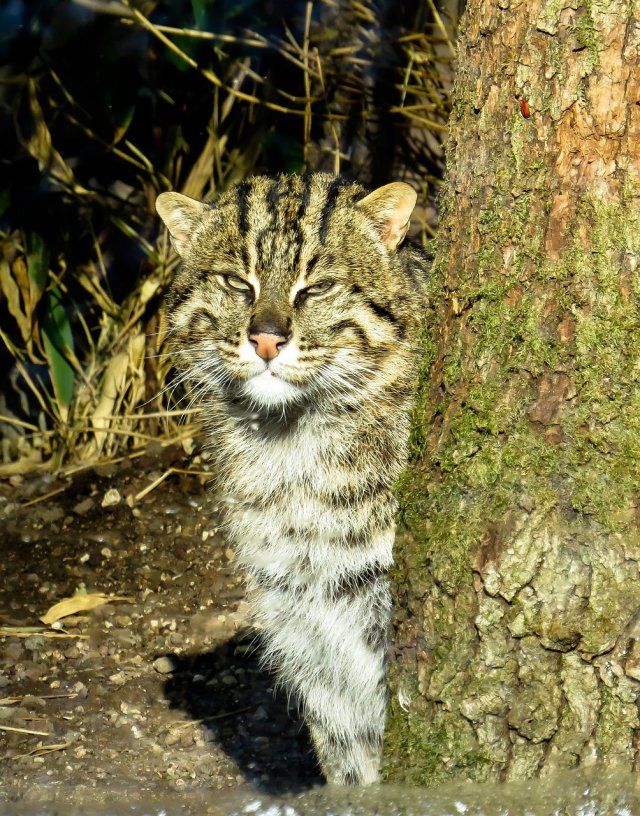6 Threats Facing Fishing Cat Populations
Fishing Cat Populations
 Fishing cats (Prionailurus viverrinus) are a unique and fascinating species that inhabit wetland areas across South and Southeast Asia. These medium-sized wildcats have adapted to a semi-aquatic lifestyle, making them excellent swimmers and skilled hunters of fish and other aquatic prey. However, despite their remarkable abilities, fishing cat populations are facing numerous threats that are pushing them towards the brink of extinction. In this article, we will explore six major threats that are endangering fishing cat populations and discuss the urgent need for conservation efforts to protect these magnificent creatures.
Fishing cats (Prionailurus viverrinus) are a unique and fascinating species that inhabit wetland areas across South and Southeast Asia. These medium-sized wildcats have adapted to a semi-aquatic lifestyle, making them excellent swimmers and skilled hunters of fish and other aquatic prey. However, despite their remarkable abilities, fishing cat populations are facing numerous threats that are pushing them towards the brink of extinction. In this article, we will explore six major threats that are endangering fishing cat populations and discuss the urgent need for conservation efforts to protect these magnificent creatures.
Habitat Loss and Degradation
One of the most significant threats to fishing cat populations is habitat loss and degradation. Wetlands, which serve as crucial habitats for fishing cats, are being rapidly destroyed due to human activities such as urbanization, agriculture, and infrastructure development. As wetlands are drained, polluted, or converted for other purposes, fishing cats lose their homes and struggle to find suitable habitats to survive.
Example: In Bangladesh, the conversion of wetlands into shrimp farms has led to a decline in fishing cat populations. The destruction of mangrove forests, which serve as important breeding grounds for fishing cats, has resulted in a significant reduction in their numbers.
Illegal Wildlife Trade
The illegal wildlife trade poses a severe threat to fishing cat populations. Fishing cats are often hunted for their fur, which is highly valued in the fashion industry. Additionally, their bones and body parts are used in traditional medicine practices, further driving the demand for their illegal trade. The relentless poaching of fishing cats not only decimates their populations but also disrupts the delicate balance of ecosystems they inhabit.
Case Study: In 2019, Thai authorities intercepted a shipment of fishing cat skins and bones destined for the illegal wildlife trade. This incident shed light on the scale of the problem and the urgent need for stronger enforcement and penalties to combat this illegal activity.
Human-Wildlife Conflict
As human populations expand and encroach upon natural habitats, conflicts between humans and fishing cats become more frequent. Fishing cats occasionally prey on poultry and small livestock, leading to retaliatory killings by farmers and villagers. The loss of their natural prey due to overfishing and habitat degradation also forces fishing cats to seek alternative food sources, bringing them into closer proximity to human settlements.
Example: In Sri Lanka, fishing cats are often killed by farmers who perceive them as a threat to their poultry. This conflict not only results in the loss of individual fishing cats but also contributes to the negative perception of the species among local communities.
Climate Change
Climate change poses a significant threat to fishing cat populations and their habitats. Rising sea levels, increased frequency of extreme weather events, and altered rainfall patterns all have detrimental effects on wetlands. These changes disrupt the delicate balance of ecosystems, making it harder for fishing cats to find suitable habitats and prey.
Statistic: According to a study published in the journal Biological Conservation, climate change could lead to a 10% reduction in suitable fishing cat habitats by 2050.
Pollution
Pollution, particularly water pollution, is a major threat to fishing cat populations. Industrial and agricultural runoff, as well as improper waste disposal, contaminate water bodies, making them unsuitable for fishing cats and their prey. The accumulation of pollutants in their bodies can also lead to various health issues and reproductive problems.
Example: In India, fishing cats are exposed to high levels of heavy metals and pesticides in polluted water bodies, leading to a decline in their population and overall health.
Lack of Awareness and Conservation Efforts
Finally, a lack of awareness and conservation efforts further exacerbate the threats facing fishing cat populations. Many people are unaware of the existence and ecological importance of fishing cats, leading to a lack of public support for their conservation. Insufficient funding and limited research also hinder conservation efforts, making it challenging to implement effective strategies to protect these endangered wildcats.
Statistic: According to the International Union for Conservation of Nature (IUCN), fishing cats are listed as “Vulnerable” on the IUCN Red List of Threatened Species, highlighting the urgent need for conservation action.
Summary
Fishing cats face a multitude of threats that are pushing them towards extinction. Habitat loss and degradation, illegal wildlife trade, human-wildlife conflict, climate change, pollution, and a lack of awareness and conservation efforts all contribute to the decline of fishing cat populations. Urgent action is needed to protect these remarkable creatures and their wetland habitats. By raising awareness, strengthening law enforcement, promoting sustainable land use practices, and supporting research and conservation initiatives, we can ensure a future where fishing cats thrive in their natural habitats.
Read More About The Fishing Cat From Wikipedia



